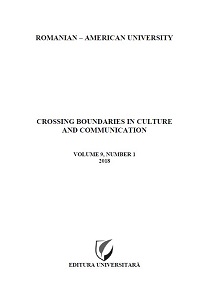Cognitive Grammar Applied to Cinematic Movement
Cognitive Grammar Applied to Cinematic Movement
Author(s): Mircea Valeriu DeacaSubject(s): Fine Arts / Performing Arts, Visual Arts, Film / Cinema / Cinematography
Published by: Editura Pro Universitaria
Keywords: Cognitive grammar; film analysis; camera movement; categorization; construal; cinematic conceptual construction; schematization; simulation;
Summary/Abstract: The present paper argues for the application of a series of notions from the Cognitive Grammar advocated by Ronald W. Langacker to film analysis. Cinematic conceptualizations are constructed in a scaffolding manner. The constructions contain bindings between schematic subcomponents (elaboration site, i.e. e-site) and more fined grained elaborations (instantiations). The e-sites are ad-hoc goal derived categories or abstract summaries of conceptual content that is further elaborated in cinematic discourse unfolding. The schematic element and its instantiation have a conceptual commonality (one is schematic and the other an elaboration of an inherent conceptual content) and exhibit similar connections with external elements, i.e. play analogous roles in processual (head – complement) and non-processual (head – modifier) groupings. Specifically, character movement and camera movement can be described with this conceptual apparatus.
Journal: Crossing Boundaries in Culture and Communication
- Issue Year: 9/2018
- Issue No: 1
- Page Range: 8-48
- Page Count: 41
- Language: English

